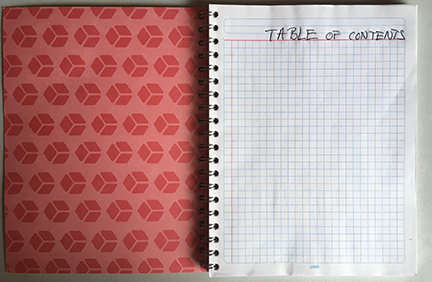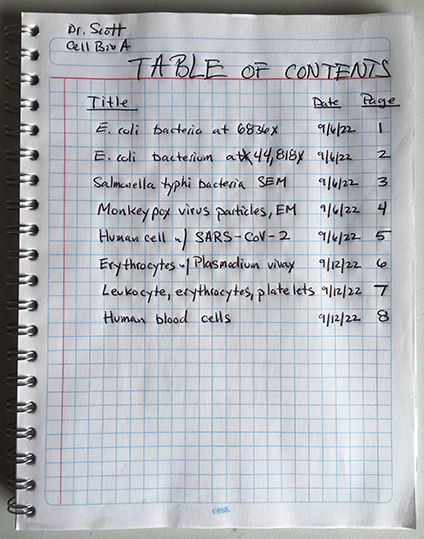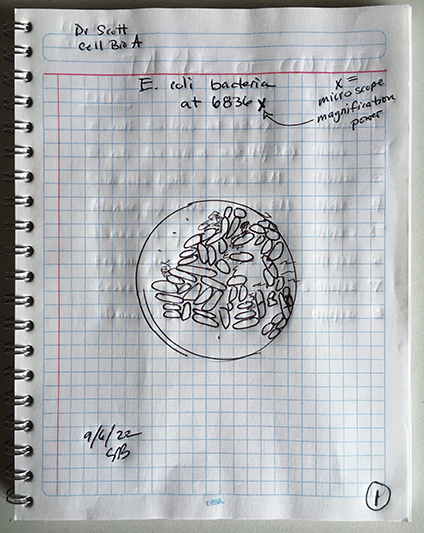Our lab report example for high school biology will show you how to write a bio lab report the right way!
Before learning how to write a lab report for biology, let’s cover the questions of what is a biology lab, and what do you do with biology lab in college and high school.
If you’re wondering what is biology lab, let’s get started but covering the 3 types of high school biology lab activities. This article will then focus on how to write a lab report for biology.
There are 3 basic types of college and high school biology lab activities, including microscope drawings, experiments, and dissections. We will focus on how to write a biology lab report based on microscope drawings in this article.
The basic biology laboratory activity is looking at cells using a microscope. The microscope is the most important tool of the biologist, as it allows us to see the tiny building blocks of life called cells. Scientists can really only understand what these cells are doing by looking at them using a microscope. Biologists keep a careful laboratory notebook, making drawings, by hand, using pencil, of what they observe with the microscope.
You’ll find lab report examples for high school biology for this type of biology lab activity below, after we describe a couple of different types of hands on biology activities that are typical in schools and professional labs.
We mentioned previously that biologists typically observe living organisms. For example, in a biology laboratory we use microscopes to observe life. A wildlife biologist, on the other hand, might use the power of observation applied to nature.
In other cases, biology experiments involve a classical scientific approach of hypothesis testing. Biologists form an hypothesis, design an experiment, obtain measurements, analyze the measurements, possibly including some math, and document the results in a biology laboratory report. The main difference here is the analysis of measurements, as opposed to strictly using the power of observation as described above for making microscope drawings.
This type of biology experiment, which is actually usually really a biochemistry experiment, has a reporting style exactly like that used in a high school chemistry lab report. There is an example of that type of high school lab report for biology in another article, as this page is going to focus strictly on keeping a biology lab notebook for microscope drawings.
Another important technique of the biologist is dissection. This type of analysis is important in, for example, medical school, so that our future doctors know what they are getting into, in terms of what’s inside the human body.
While we don’t engage in any dissections in our courses, the idea would be to make careful drawings in a biology laboratory notebook, much like would be described in the below lab report examples for high school biology microscope drawings.
Let’s learn how to write a biology lab report, by following the easy steps and bio lab report examples below, whether you’re in a physical lab doing experiments or in an online class with online experiments.
It happens to be the case that the first thing is the most important thing in your biology lab notebook for keeping detailed microscope drawings. As shown in the lab report example for biology below, the first page should always, always, always, always have a proper Table of Contents.
Always start your biology lab notebook by writing Table of Contents on the first page, which is the page inside the notebook cover (see below example). Do it now before you forget, or you’ll have to start over!

So what’s a table of contents for a high school biology lab report? It’s a listing, on the first page of your biology lab notebook, of all of the drawings that you have made as part of the class you are taking. In other words, it’s totally not okay to just get started making microscope drawings of things you observe in biology lab. You have to first set up your biology lab notebook with a Table of Contents on the first page. This is done by simply writing “Table of Contents” on the first page of your bound laboratory notebook.
It’s the single most common error in biology to not have a table of contents on the first page, and your teacher or lab instructor definitely is not going to like it that way. It really, really, really needs a proper Table of Contents. There are no exceptions to having a Table of Contents in biology lab.
Also have your name and course name (or lab name, if it’s a professional lab) on the Table of Contents page, as shown in the biology lab report example below.
Then, each time you make a drawing in your biology lab notebook, the idea is to log it on that Table of Contents page (see below example). At minimum, you should name the drawing and show a page number on your Table of Contents. Your teacher, school, or lab might have additional requirements for keeping the Table of Contents, too, such as showing a date for each activity.

In summary, the Table of Contents is the most important thing. And it belongs right up front. Keeping a Table of Contents is what makes your drawings science, because it keeps them organized. If you just have a bunch of random drawings that aren’t organized, it probably would fall into the category of art, not science.
In the above high school biology lab notebook example, we can see from the contents that Dr. Scott made a set of microscope drawings on September 6, ending with a human cell infected with SARS-CoV-2 (COVID-19 or Coronavirus), which is shown on page 5. Then, on page 6, a new set of three microscope drawings starts on September 12, ending with human blood cells on page 8. The Table of Contents shows plainly what happened and when it happened, which helps us to organize our data scientifically.
We’re very picky about using the right type of paper in science. Science is about writing things down, or keepings records, so that we can draw conclusions. And it’s important that it looks good on paper! So, it’s always an important point to have the correct paper.
The main thing about keeping a biology lab notebook is that it needs to be bound. We consider that honesty in science, so that pages cannot be shuffled around, added, or removed. Basically, the lab notebook should be held together by either a metal spiral binding or some type of glue.
Importantly, never use lined paper. Choose graph paper or blank pages. And you will be making the drawings in pencil (not pen).
It’s also important that the pages of your biology laboratory notebook are numbered. It’s possible to buy an expensive lab notebook in which the pages are already numbered. That might be a requirement for your school or lab, and you have to check with your teacher. A good, slightly less formal option is to just get a spiral-bound notebook and number the pages yourself. Remember, it’s going to have to have numbered pages, or else your Table of Contents isn’t going to make any sense.
You’re going to need to make a copy of your biology lab notebook to show your teacher or instructor. Traditional, expensive biology lab notebooks have carbon copy pages, using carbon, charcoal dust, to literally make a copy of the page as you write. In case you didn’t know it, that’s where the c.c. in email comes from, as it stands for carbon copy. That’s how things worked before the days of email. A good, slightly less formal option is to just scan pdfs of your lab notebook pages for your teacher or instructor to make the required copies.
First, use pencil. A good example of a biology lab report drawing would be shown in pencil; however, I’m using pen in the images below for the simple reason that it shows up more clearly on the internet. In the real world, you should be using pencil for biology lab drawings.
Second, make one drawing per page. Come up with a good name to use as a title and put it at the top of the page. Make sure the page is numbered, so if you’re not using pre-numbered notebook pages, put the page number somewhere near the bottom of the page in a consistent location.
Third, each time you make a drawing, you have to log it in the Table of Contents. Remember, this is the most important part. Otherwise, it’s just a bunch of art. It isn’t science unless it’s organized using a Table of Contents. The Table of Contents should show the name and page number for the drawing on each page of the notebook. Compare the images above and below, and verify that page 1 actually contains what the Table of Contents says is there (E. coli at 6836x). It needs to match. No exceptions whatsoever.
Fourth, remember it’s about observation. You are to simply draw what you see. Don’t make things up. Don’t be artistic. You’re not being graded on your artistic ability. You’re just being given credit for drawing what you see, exactly as you see it, to the best of your ability. There’s an example of a E. coli microscope drawing below from a simulated microscope lab activity. Mainly, your teacher is going to like it if you set a good example by keeping a proper Table of Contents.
By following these simple steps, you’ll quickly learn how to write a biology lab report that makes your teacher happy.

Our top cell biology courses include a complete set of cell biology lab experiments that will teach you how to write a lab report for biology. There are free, self-paced, and live versions of the course, and you can find more information by clicking on the cell biology lab experiments courses below.

Dr K has decades of experience in labs and veterinary medicine. She knows how to train young scientists for bio labs for college prep. After all, you want a lab instructor who has actually worked in professional biolabs and major research institutes. When it comes to labs, experience matters!